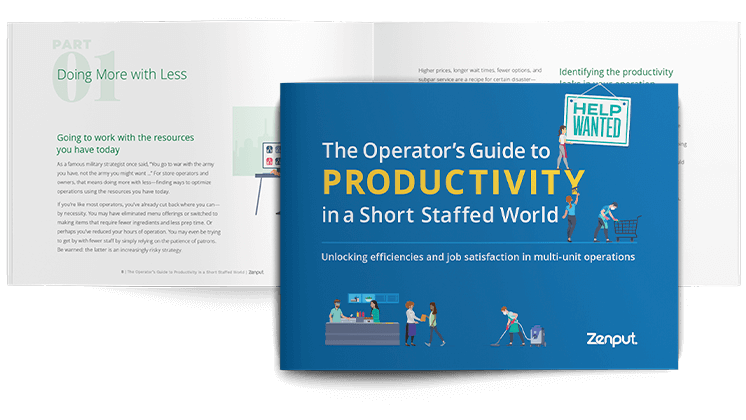Workplace productivity plays a big role in determining an organization’s success, especially in multi-unit operations. Efficient business processes have a direct impact on business performance. For instance, a retail store or restaurant that follows a standardized business process, from allocating tasks and maintaining the store, to tracking compliance and corrective actions, can operate more efficiently.
To achieve growth and expansion, operators must be more strategic and organized in their approach. Store level visibility, cost of labor, and customer experience are a few areas where organizations have to consistently improve to remain successful. Streamlining internal processes and making employees more productive can deliver a better customer experience, which leads to driving more profit.

Before making changes or improvements, it’s important first to understand what influences and impacts employee productivity. Here are six important factors to consider:
- Employee Engagement: As per Gallup’s report, organizations with a high level of employee engagement noted 21% higher productivity. Reasons for employee disengagement include lack of tools and resources, lack of collaboration, poor management of the business process, excessive workload, etc.
- Tools+ Tech: In the modern work environment, the right tools and automation are your team’s best ally to boost productivity. In their absence, it becomes extremely difficult for employees to perform their tasks quickly and efficiently.
- Communication: The continuous flow of information between employees and management is necessary to make employees accountable for their work. Employees that have adequate knowledge and understanding about their tasks or projects are enabled to perform better.
- Clarity on Tasks: Employees who don’t have clarity on what needs to be done often spend time on the wrong tasks or don’t do meaningful work at all. This hampers their productivity and adds costs to the organization.
- Training: To perform specific tasks, employees need to be trained correctly to upgrade their skills, and if adequate training is not provided, it could reflect in their work.
- Visibility: Managers that don’t have a system to monitor business processes cannot see what difficulties employees face while performing tasks.
After taking these factors into consideration, operators can take the next step toward enhancing team execution at every store location. Operations Execution (OpsX) software takes the guesswork out of boosting employee productivity. OpsX software aims to simplify the overall execution of work and the complexities associated with it.
With OpsX software, operators collect real-time information from employees in the field, send management notifications, and track the resolution of issues. They can also schedule tasks for employees with automated follow-up. District managers and other team members can comment on a particular task to improve the employees’ performance as well. This allows them to help mitigate issues that employees encounter while performing tasks on the field, and as a result, increases the quality of work and boosts employees’ productivity.
To learn more about employee productivity and how Zenput’s OpsX platform can help you unlock efficiencies across each level of your operation, download The Operator’s Guide to Productivity in a Short Staffed World.

Subscribe to our blog
You are now subscribed!


